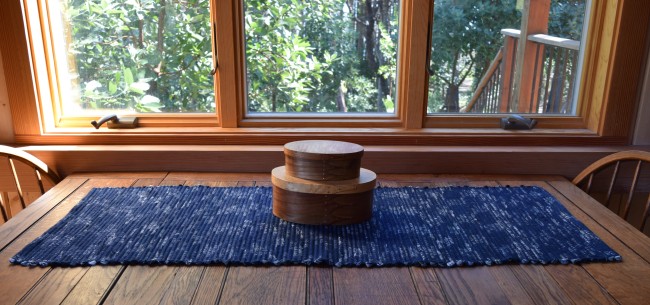
Sakiori was developed long ago by the peasants of Japan, who when faced with a shortage of cloth, made their own by cutting and tearing strips of old used cloth items, and wove them into new cloth for their clothing and home. These days an over-abundance of cloth is everywhere, providing such an opportunity to weave sakiori cloth, from rustic heavy rugs to delicate scarves. I am immensely inspired by the Sakiori style of weaving, and so I bought Ashfords attachable auxiliary cloth beam for my 48″ rigid heddle loom (the Freedom Roller) so that I can weave Sakiori cloth and rag rugs until the cows come home!
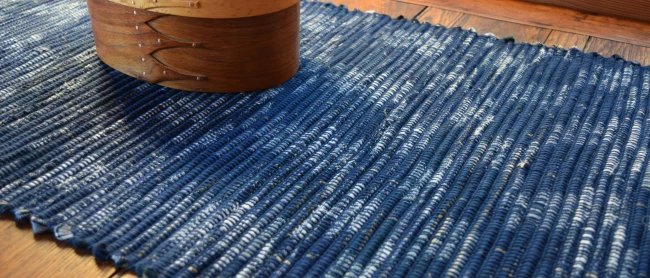
Sakiori is like rag rug weaving, that similarly uses cloth strips, but alternates cloth wefts with yarn wefts, so that is a whole element that adds possibility in design. This being my very first sakiori weaving, I have kept it simple, one color for warp and weft. Although I barely even put 5 rounds of sakiori cloth on it with this weaving, the attachment seems to me an essential addition for a rigid heddle loom to make bulky weaves like this, but even for yards of finer fabric, or any situation that benefits from having extra room to wind on a cloth beam, the Freedom Roller frees up the original cloth beam to be used as a secure and stationary front/breast beam, giving the weaving area in front of the reed more room too. I am hoping to weave some heavy wool blankets, rag rugs, and heavier table linens woven in the near future, to fill up that secondary cloth beam with some substantial weaving, and this piece was my first opportunity.
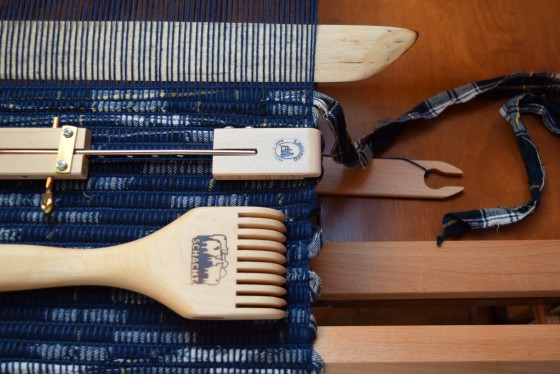
For this style of rag weaving, and in general on the rigid heddle loom, I’ve had to come up with heavy beating tools, because the rigid heddle reeds can not withstand that kind of muscle, and they are expensive, so one must come up with beater tools just for rigid heddle weaving situation like this. I am using the sword from my backstrap loom for this particular weaving that is only 19″ wide, but also tried out the weighted tapestry beater by Schacht. The sword is a heavy piece of wood that has a beveled edge and a slight curve to it so that it can be rocked a little forward and backward, to really pack in that weft. A tapestry beater is a heavy object with grooves like a comb, intended to hit along the weaving edge, allowing the warp to pass between the grooves, and really pack in the weft. These tools slow down the weaving a bit, but with the rigid heddle loom not having a heavy beater like a floor loom, I think these two tools are and will be an essential part of sakiori weaving.
I want to close in saying how amazingly gratifying weaving Sakiori is, because it really weaves up so incredibly fast, especially on the rigid heddle loom where direct warping is in itself so speedy. I am finding I can set up a project like this one and be done warping and tying on in about an hour and be well on my way weaving the weft body by the end of the day. This respite of instant gratification weaving is so refreshing after my many ultra fine weaving projects I’ve been experimenting with over the last couple of months.
♣ Weaving Notes ♣
- Warp Yarn: 8/4 cotton yarn, Maurice Brassard, 8.0 oz (~227g) tube = 840 yds. (1680 yds./lb, in color blue. Approx 80″ from apron rod to peg.
- Weft Yarn: Cotton flannel, strips 1.5″ wide, alternating with warp yarn.
- Loom: Ashford 48″ Rigid Heddle Loom, with Freedom Roller attachment.
- Number of warp ends: 480.
- Reed: One 12.5 dent rigid heddle reed, about 19″ width in reed.
- Sett on loom: Warp= 12 epi (ends/threads per inch), weft= 8 cloth picks and 8 yarn pick = 3″.
- Edges: I did not do floating selvedges, nor did I bother to double up selvedges, but did use a temple. I did weave plain weave with the 8/4 cotton for approx 2″ before and after cloth strips, so that I could make a turned hem.
- Finished: 1/2 inch turned hem, sewn against the underside of ends. Rinse & Dry cycle in machine, final measurement after shrinking 8% in length = 9″ x 44″.
- Yardage: I did not measure or weigh the actual fabric I tore into strips, but I had a 2 yard piece of brushed plaid, and I have quite a few strips left over, so all I can say is about 1.5 – 1.75 yards of cloth. As for the cotton warp yarn, I didn’t think well about this particular weaving, as it is mostly cloth strips, however I will say I didn’t use the whole warp, I had about 10″ left of warp and didn’t even use the whole cone of yarn for warp and weft.
- What I will do differently next time:
- Use floating selvedges! The rag weft is so thick that if it doesn’t encase the last threads, they sometimes ended up floating over vertically, and I found myself having to catch outer warp threads every pick to keep that from happening, and even had to sew in at the finish some of the long floated warps I missed. 😦
- Measure a piece of string that is the length I want to weave the project, and weave it or pin it to the actual cloth as it winds on to the beam. I did this but let it wind around next to the cloth, and the diameter was much smaller, therefore not accurate, and my end project was about 6 inches longer than I planned for.
- Take the time to prepare the cloth strips a bit better; pre-roll and iron the weft, hiding all raw fuzzy edges of torn strips, perhaps use a bias tape folding tool.
- This thickness was fine for table runner but could have been finer with cloth strips only 1″ wide. For rug I would make cloth strips 2″ wide minimum.
Click 1st image to go to gallery slideshow.
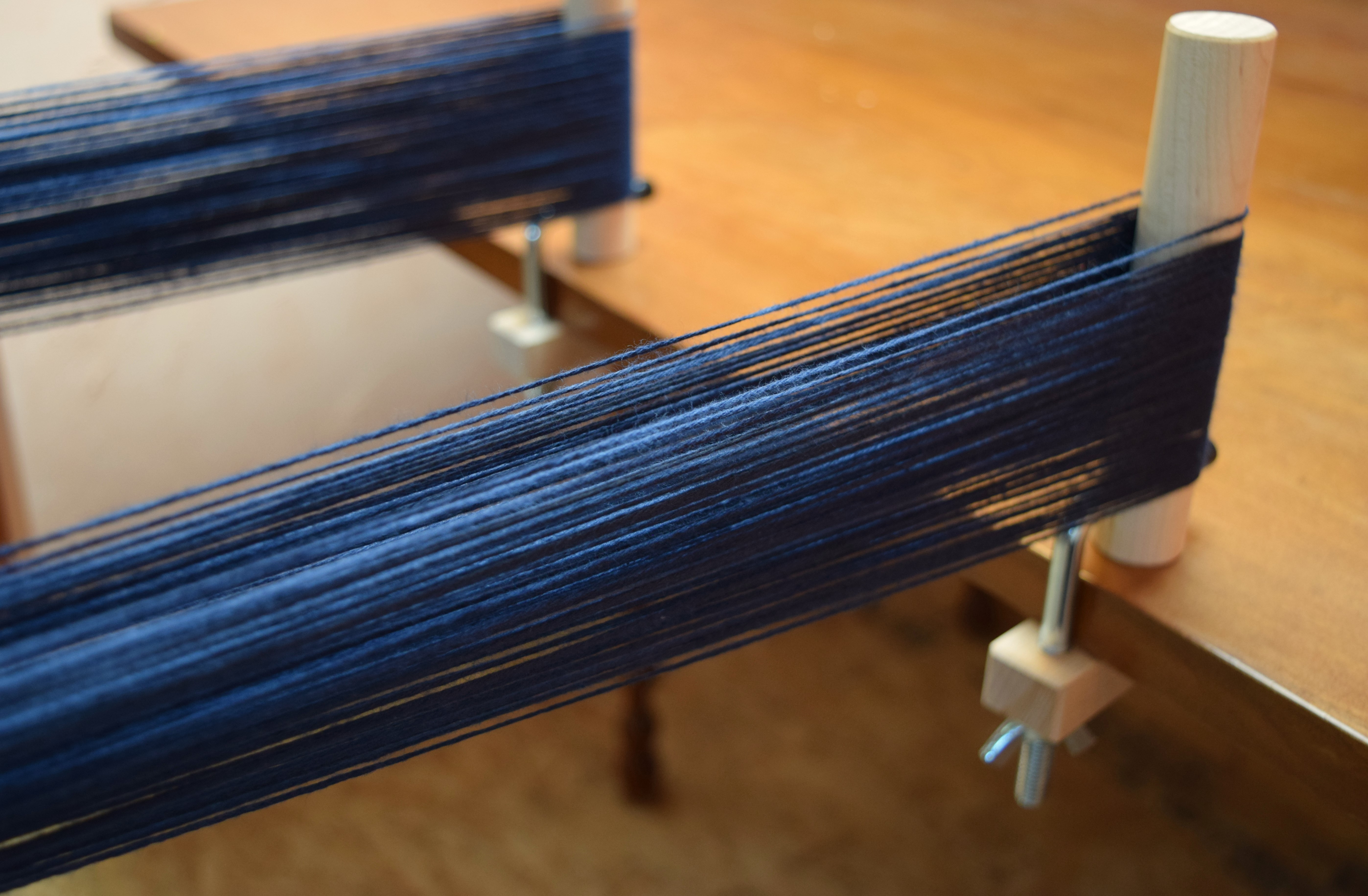
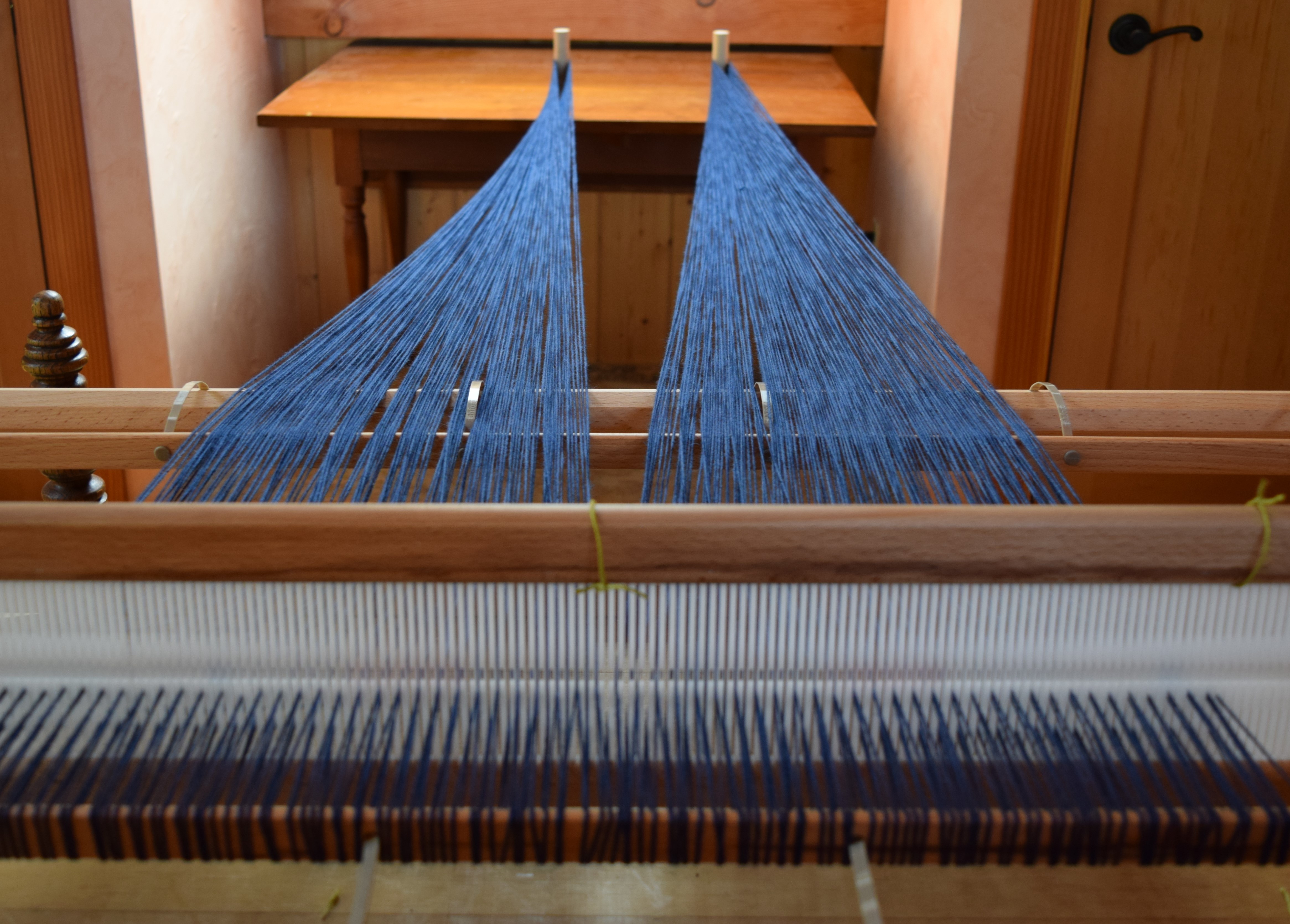
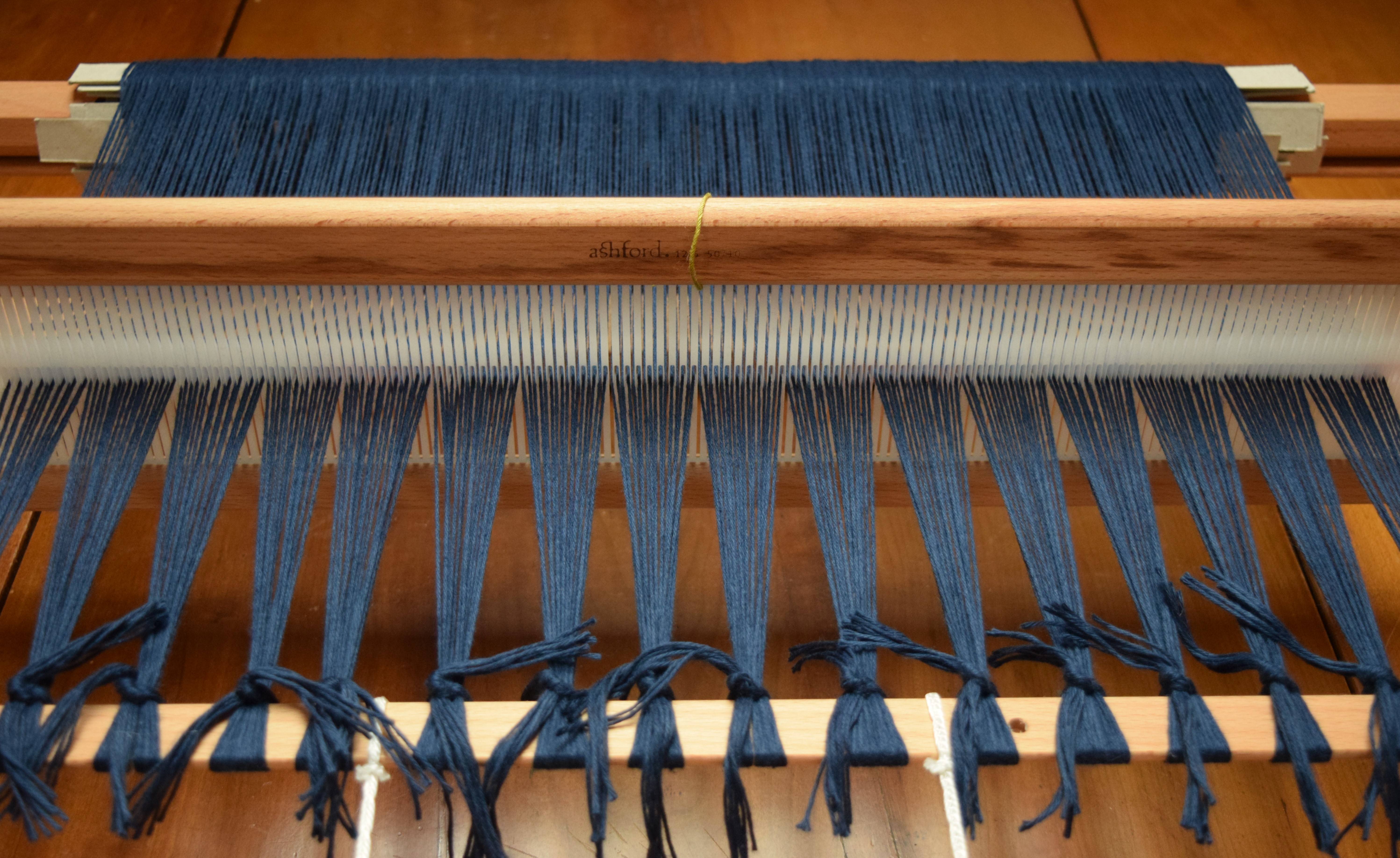
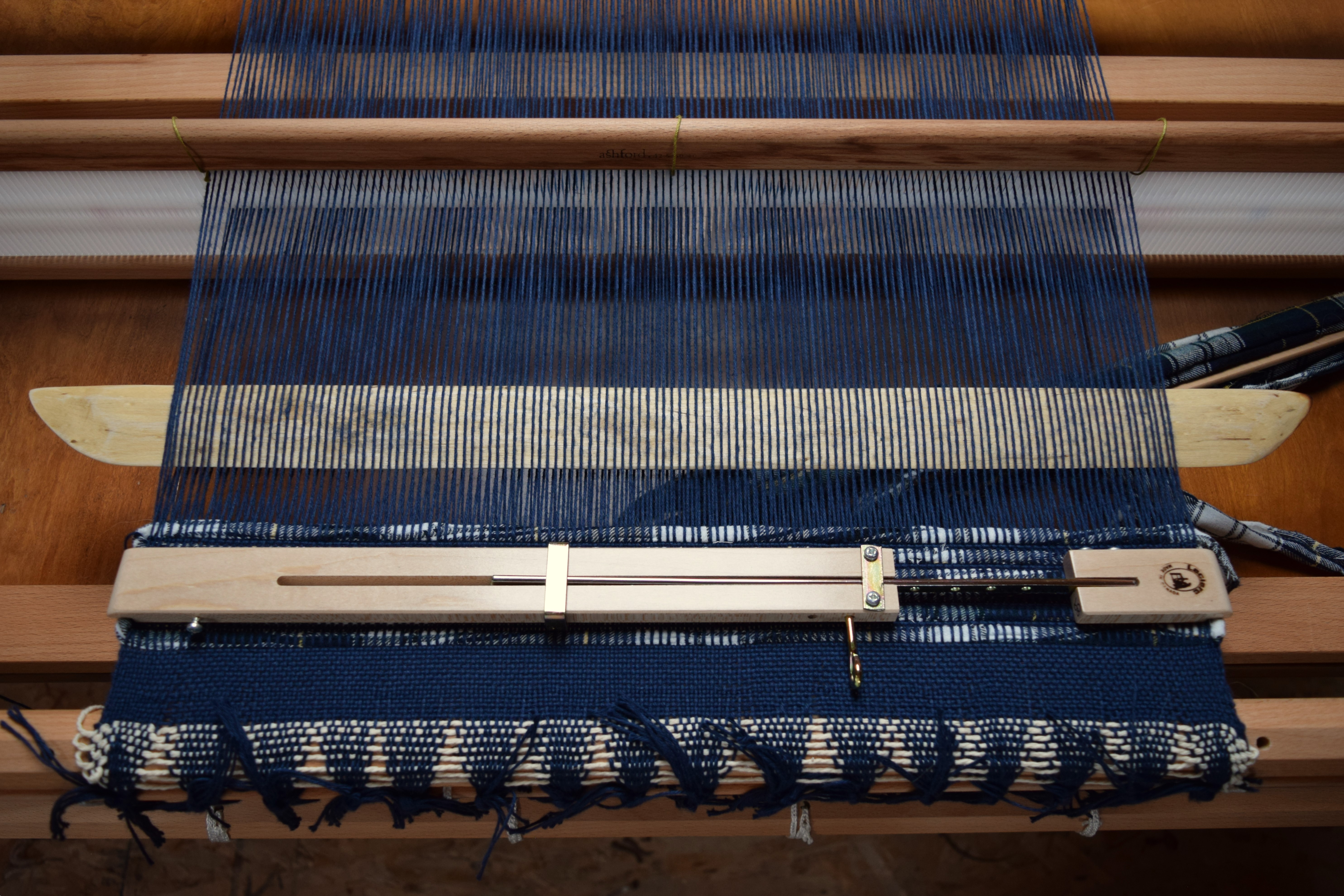

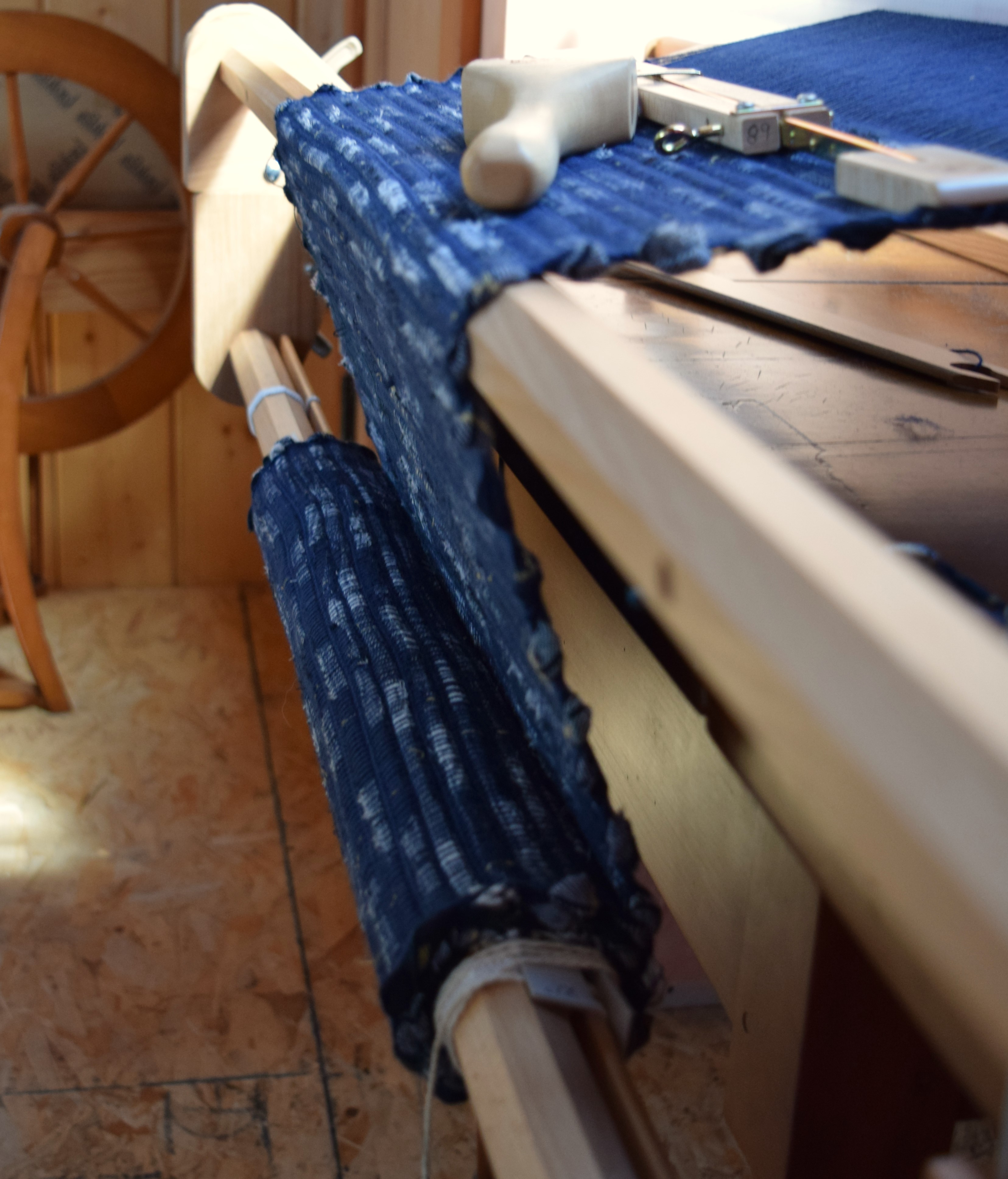
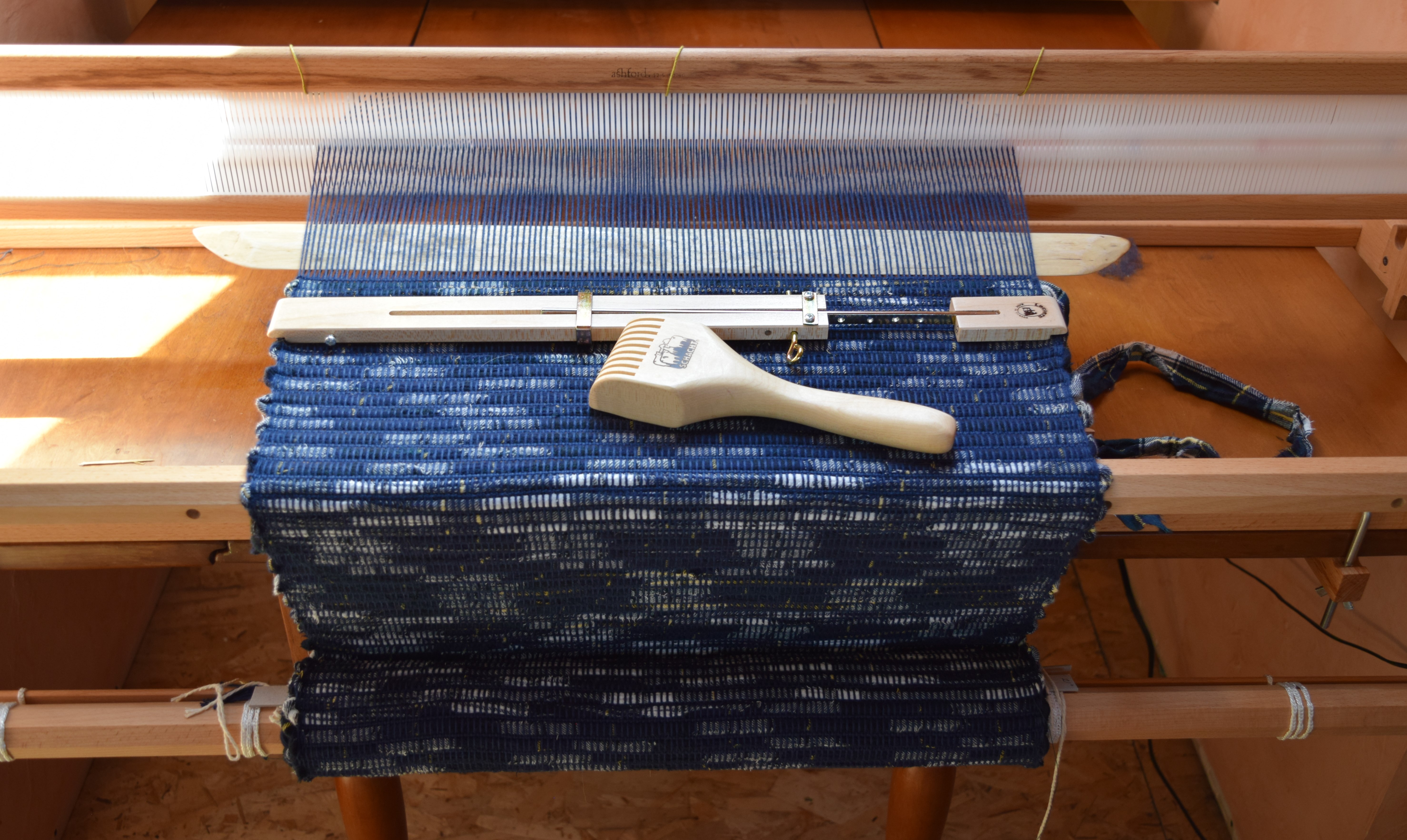

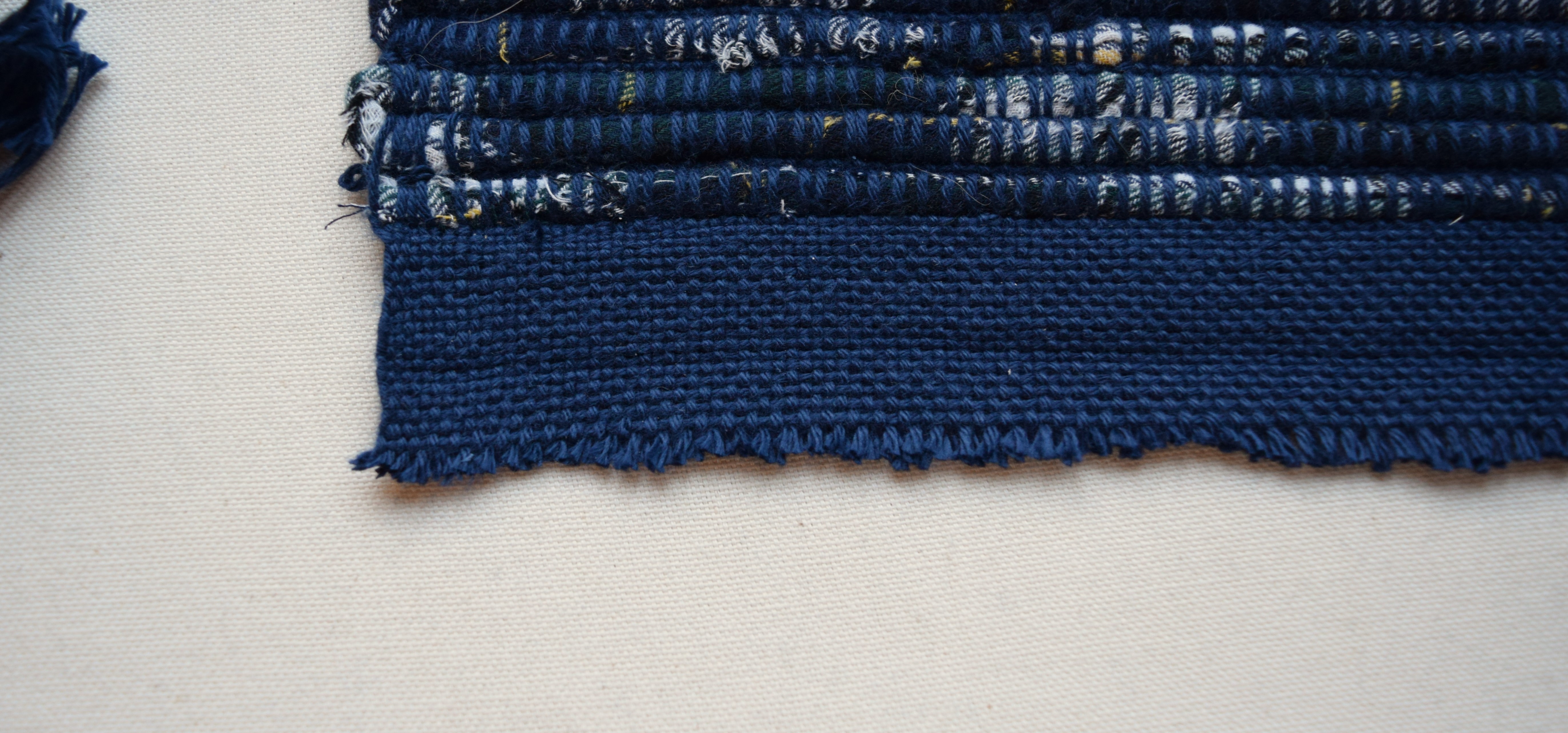
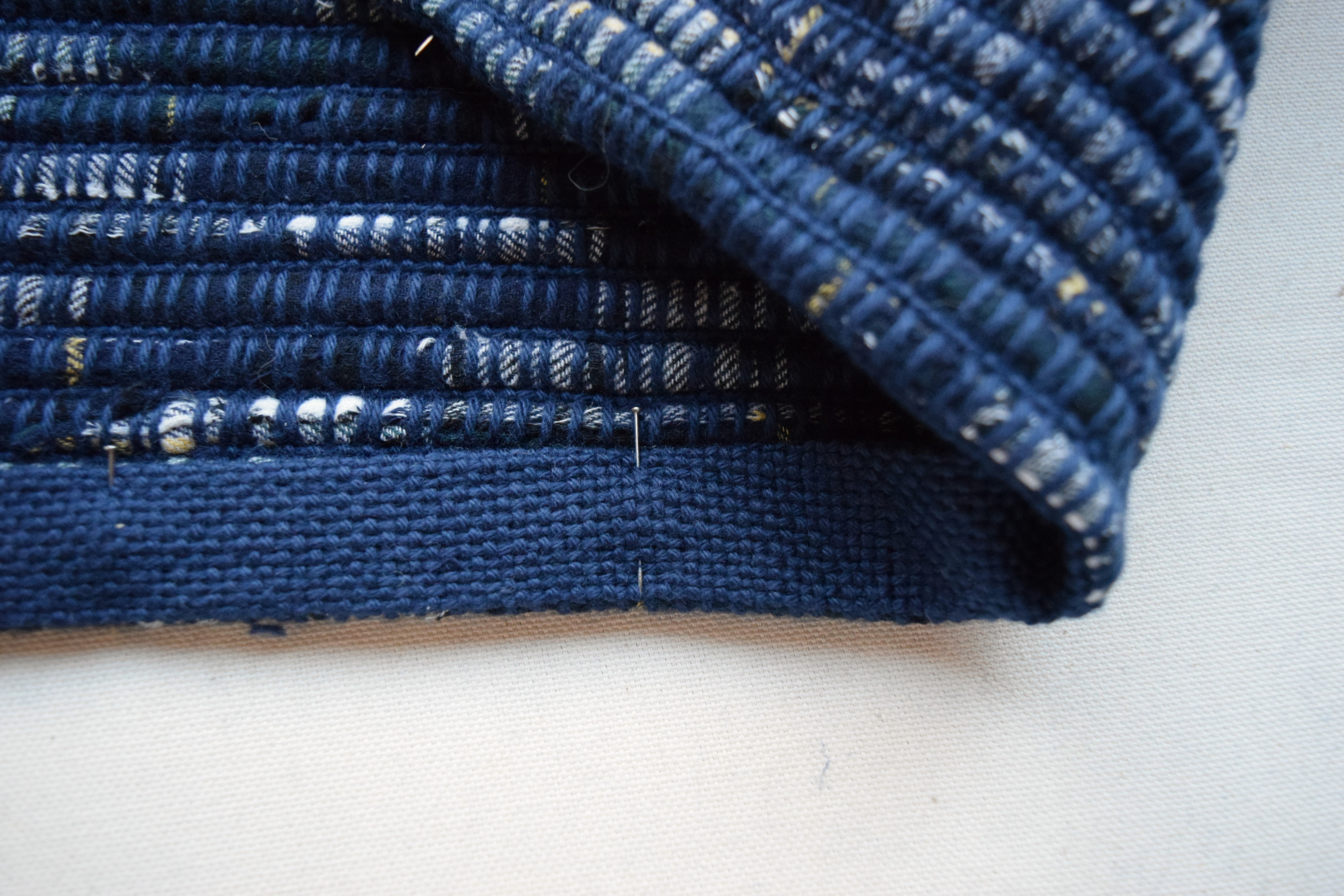
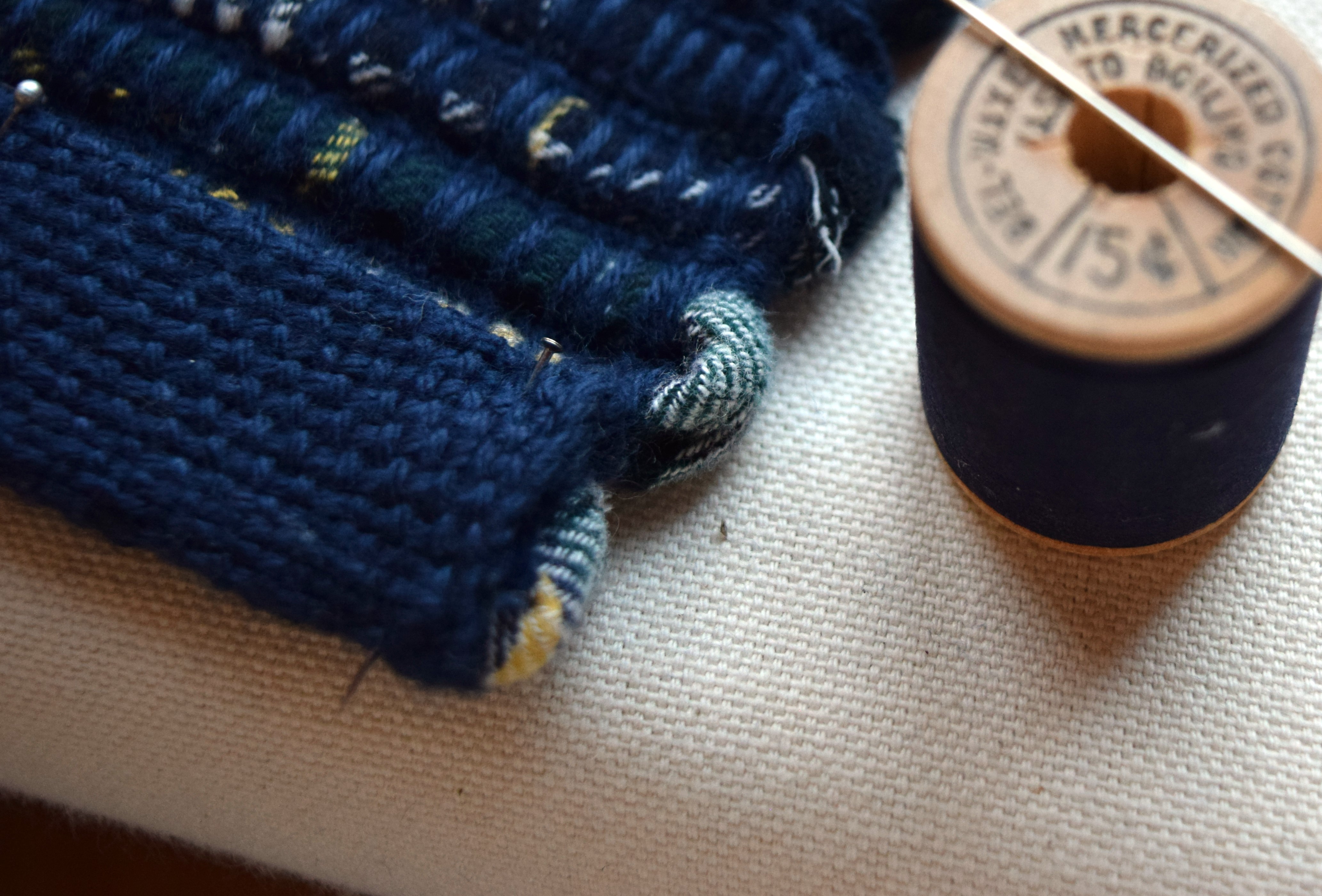
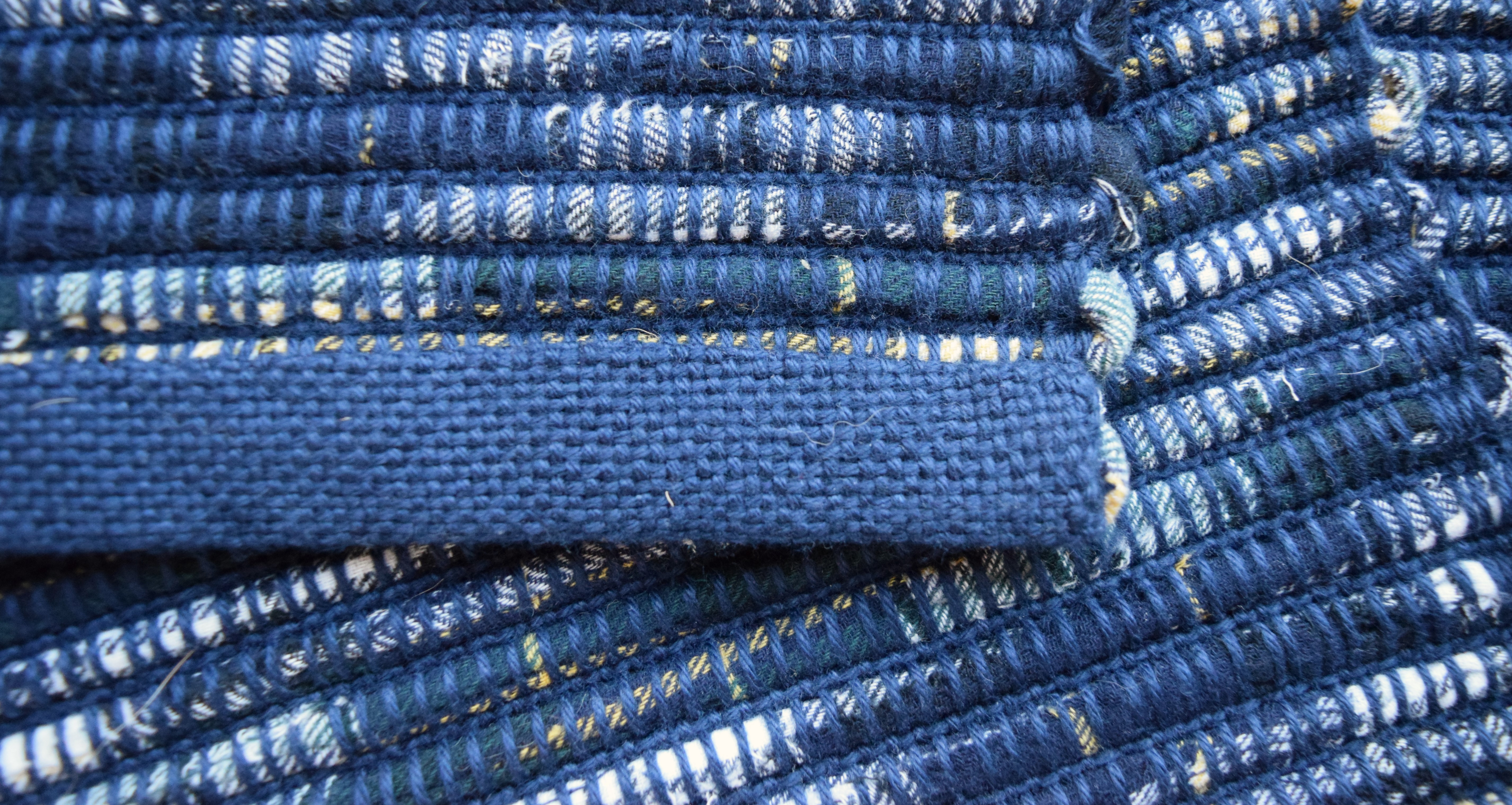
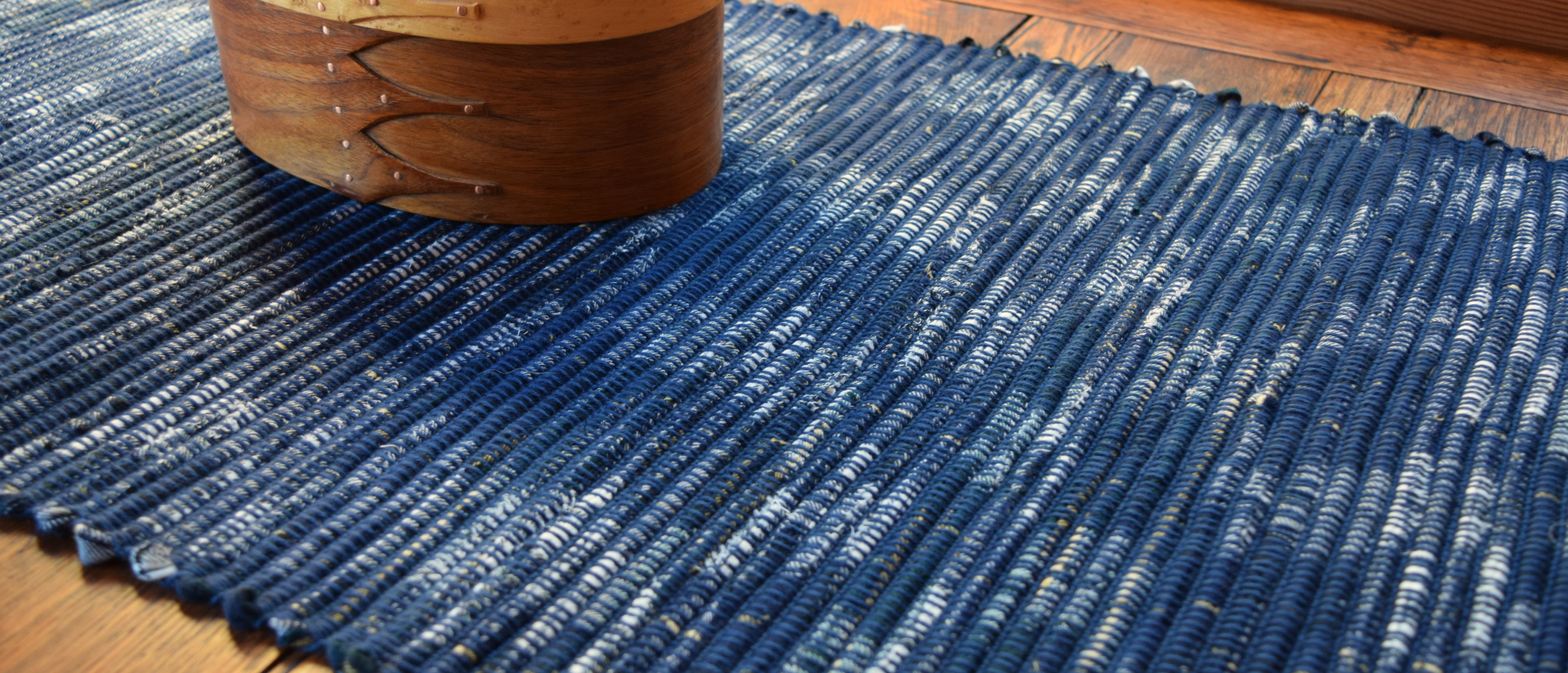

What a fun project and the new things you’ve learned! Seems like each weaving project you complete, you learn SO much! Looks like a new obsession is born! I can hardly wait to see what colors you use next time!
Thank you Sorcha! I agree about so much being learned, my head hurts! xx
I bet! But then next project you’ll have more tools in your toolbox.
I must admit, the Freedom Roller, however clunky and hinting toward excessiveness it is, I am so glad I got it! I can always leave it in the closet if I don’t want to weave a big thick thing, unlike a floor loom, or table loom, where that feature is built in.
Oh, and the weighted Schacht tapestry beater is proving to be a great purchase!
Beautiful!
Hey, thanks Regina!